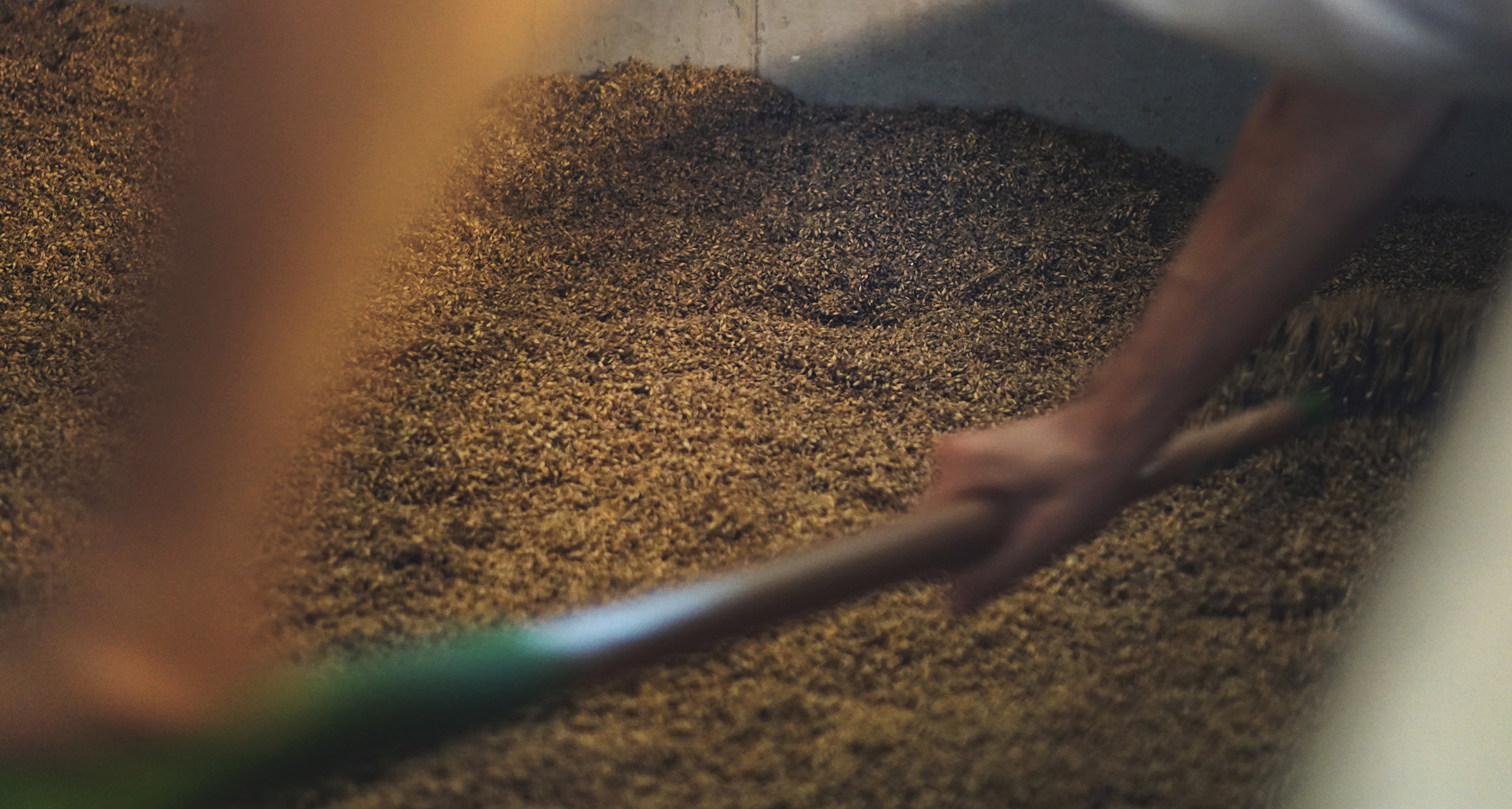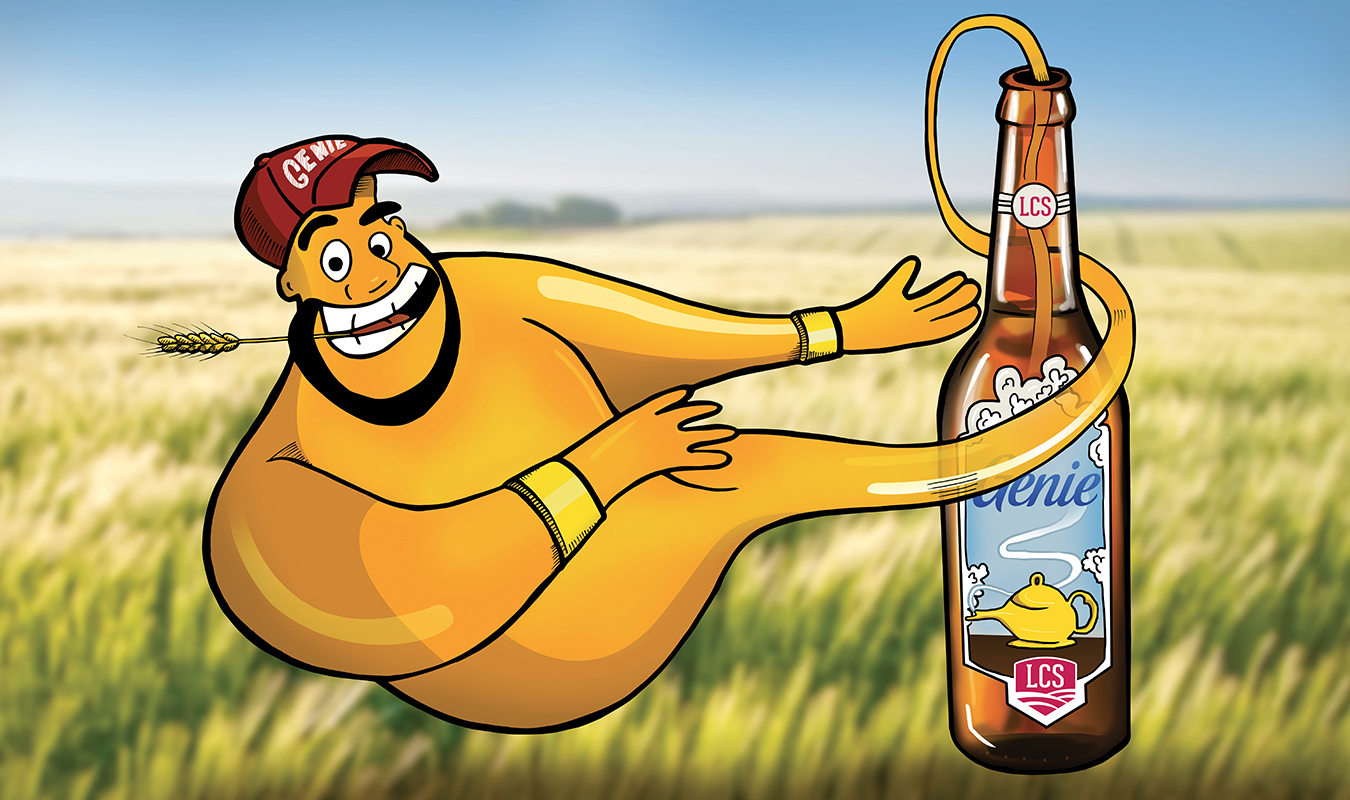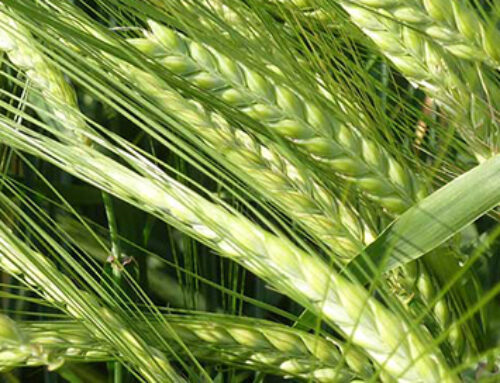The untapped potential of LCS Genie in the craft beer market
By Matthew Curtis
Cold is the name given to an unfiltered, Pilsner-style beer produced by TRVE Brewing (pronounced “True”) in Denver, Colorado. Brewed very much in the style of the classic German lagers that influenced it, on your first taste Cold presents flavors of crushed oats, a little biscuit, and a dusting of peppery hops. Its finish is dry and refreshing, as all good lagers should be, immediately tempting you to take another sip.
Scratch a little below the surface, however, and a few other, perhaps unexpected flavors begin to reveal themselves: white grape, honey, and fresh peach. Unlike the majority of American craft beers, the presence of these—quite frankly, delicious—notes is not provided by the judicious use of hops cultivated within the Pacific Northwest. Instead, it’s thanks to a two-row malting barley variety called LCS Genie, grown just a few miles away from the brewery in Northern Colorado, and transformed into high-quality malt for brewing by Troubadour Maltings in the nearby city of Fort Collins.
LCS Genie has the potential to radically alter the malt supply chain in American craft beer. Bred by farmer-owned cooperative Limagrain Cereal Seeds (LCS), LCS Genie has sourced award-winning malts every year at the Craft Maltsters Guild’s annual Malt Cup, including a gold, two silvers, and a bronze this year alone. In addition, several beers made using this malt have earned medals at the annual Great American Beer Festival, held each fall by the Brewers Association.
Beyond this, an increasing number of small, or craft, maltsters and breweries are now asking for this variety by name. Not only for the production of new, or experimental, beers either, but also for longstanding, core range products enjoyed by hundreds of thousands of people across the United States. And, in addition to offering brewers great flavor and high performance at a technical level, it’s also giving brewers the opportunity to connect more deeply with local supply chains, allowing them to source a high-quality, great-tasting raw material from local farms and malthouses. A process that not only makes beer production more sustainable, but also helps businesses connect their customers with the agricultural processes inherent to the existence of these products.
Could it be that LCS Genie will help define the next chapter in North American craft brewing?
“Tasting barley over the years, it was clear that [LCS Genie] was a step above what I could get from the mass-production sources,” TRVE Brewing’s head brewer and co-owner Zach Coleman tells me. “My concerns quickly shifted from wanting to use it to: ‘Is this something I’m going to be able to get regularly?’”
A spring barley originally—yet unsuccessfully—developed in the United Kingdom for use as a distilling variety, LCS Genie has since thrived in the U.S. climate and is becoming an increasingly popular malting barley within the beer industry. From an agronomic perspective it produces high yields, with its naturally lower levels of protein benefitting growers looking to use high-input management systems (essentially producing more than one crop per field within a calendar year). As a malting barley variety, LCS Genie is officially recommended by the American Malting Barley Association.
The variety handles exceptionally well in the malthouse, performing well as both a base malt and for maltsters looking to be more creative with the flavor expressions they’re looking to produce: from lighter Pale and Munich-style malts, right through the spectrum to roasted Chocolate and Dark malts. On a technical brewing level, it yields both high and consistent levels of extract, while also having a beta-glucan content of under 100 ppm. This ensures efficiency in the brewhouse, while also yielding a superb range of flavors, depending on the style of malt being used.
Since its initial trials by Washington State University in 2013, LCS Genie is now cultivated in 17 states, including Washington, Idaho, Montana, and Colorado. And not only does it provide a barley malt option that is both efficient and packed with flavor, for craft brewers like Zach Coleman at TRVE, it means he’s able to source a product that is both cultivated and malted within 30 miles of his brewery.
“For me, it’s important for brewers to spearhead using local grain—in this case LCS Genie—and not give people a choice to not support local agriculture,” Coleman says. “I want our beers to be representative of the place they’re made from.”
Coleman—a Texas native who relocated to Colorado in 2013—has been brewing for more than a decade. After stints at Boulder’s Upslope Brewing and Big Choice Brewing in Brighton, he eventually joined TRVE as head brewer while the brewery was in its early stages of development. He would go on to become a co-owner of the Denver business in 2019. At TRVE, he’s developed a delicious range of beers, including balanced and crushable lagers like Cold, classically resinous and citrus-led American IPAs such as Tunnel of Trees, and sour, funky, wild-fermented beers Coleman creates in a facility known as the “Acid Temple.” LCS Genie malting barley is at the heart of all of these recipes.
Coleman was introduced to the variety by his friend Chris Schooley, the co-founder of Troubadour Maltings in Fort Collins, an hour’s drive north of Denver. Coleman sources the majority of his malt from Troubadour, as well as another local malting company near the city of Loveland (just south of Fort Collins) called Root Shoot, a farm-based business that grows and malts LCS Genie barley.
“I decided I really wanted to work with these guys, especially after seeing and tasting the malt they were producing, because it was so good,” Coleman tells me. “Right away, especially with these maltsters, the quality was there. Really though, it was meeting Chris and bonding with him personally. Troubadour has a different approach to malt that’s really appealing to me.”
Cold uses a 100% LCS Genie-based malt from Troubadour known as Pevec (pronounced “pev-ich” and the Czech word for a songbird). Although technically a Pilsner malt, Troubadour prefers to put its own spin on each style of malt it produces. Rather than Munich or Vienna malt, for example, here they’re called Ballad and Serenade. As well as tying in with the musically themed branding of the business, for Schooley and his co-founder Steve Clark, it’s a way to encourage their customers, and those who drink and enjoy these products, to forge a closer relationship with the ingredients in what they buy.
Think about it: For decades, the hop industry has been using engaging terminology for popular varieties to the point where Citra, Mosaic, Simcoe, and the like are now a part of the typical craft beer drinker’s vernacular. Troubadour’s thinking is: Why not with malt?
“I always see the flavors and character you can draw from a raw material as being latent potential and not intrinsic potential,” Schooley tells me. “That’s really the axis of what LCS Genie brought to the table, in that it was intended to have character, which flies in the face of where most breeding was around malting barley in North America up to that point.”
Much of Troubadour’s existence is owed to chance. Schooley met Clark because their daughters attended the same school, and the former would often stop by to try the latter’s homebrew after the school run. Schooley used to be in the specialty coffee industry, including a stint at the Chicago-based Intelligentsia Coffee. Living in the beer-centric city of Fort Collins opened his eyes to the potential of connecting its many brewers directly to the malting barley supply chain; from the farm right to the glass. By coincidence, Clark—who was formerly based in the pharmaceuticals industry—had been drawing up a business plan for a malthouse. The idea for Troubadour was sown.
Incorporated in 2013, after spending the best part of a year building its facility along Lincoln Avenue (near several breweries, including Odell, Funkwerks, and Horse & Dragon), Troubadour finally began producing malt in 2015. One of the biggest hurdles it faced, however, was finding a barley variety it could contract, as intellectual property laws blocked access to the majority of two-row barleys currently being cultivated in the United States. Fate, it seems, would supply the answer once again. A chance meeting between Clark, Schooley, and several LCS employees at the (now sadly shuttered) Pateros Creek brewery in Old Town Fort Collins saw the forging of a fortuitous relationship.
“We built a malthouse right at a time they needed a malthouse, and we needed a barley variety right at the time they were looking at introducing a new one to the area,” Schooley tells me. “We needed a variety that didn’t belong to anybody and was capable of producing something really special.”
The unique approach Clark and Schooley have adopted in both the production and marketing of Troubadour malt has seen them win favor with a great many small, local breweries, from Primitive Brewing in Longmont, to Cohesion, Baere, and Our Mutual Friend in Denver, and Horse & Dragon, which is located just a few hundred yards from Troubadour’s base of operations. The quality of its LCS Genie-based malts has also attracted the attention of larger, regional breweries, such as Oskar Blues, Odell, and New Belgium. The latter recently produced a nationally distributed sour beer called Dominga using Troubadour malt. Inspired by the paloma cocktail, it utilized a custom-made LCS Genie-based malt that was smoked over cactus leaves for extra flavor.
In 2020 Troubadour completed an expansion, tripling its capacity. At the same time, it added a barley roaster designed by German manufacturer Bühler, allowing Schooley to call on his coffee industry past and produce a range of roasted malts he calls Troubadour’s modulated series. He tells me how their small size in comparison to larger, industrial-sized malthouses allows them greater flexibility. One example of this is the ability to produce custom batches of malt designed to meet a brewer’s demanding specifications, such as the one recently produced for New Belgium.
“Our whole goal from day one was not necessarily to create this whole pile of SKUs, but rather for brewers and distillers to come to us and say, ‘This is what we’re looking for. Can you do this for us?’ and open up the opportunity for customization,” Schooley says. “LCS Genie gives us so many options to unlock that customization. It’s the perfect little seed and has so much potential.”
The balance and variety Troubadour is able to extract from LCS Genie in both its base malts and its smaller batch custom roasts is surely an example of the latent potential Schooley spoke of earlier. It’s not just the brewers and distillers who use this malt that think so either, with Pevec taking home a silver medal in the 2021 Malt Cup. What’s all the more remarkable is that Pevec won in the more characterful Pale malt category, rather than the Pilsner malt category, further demonstrating the flavor and character LCS Genie is able to provide. Something you can taste immediately, each and every time you sip a pint of TRVE Cold Keller Pils.
“It’s a beautiful beer that really showcases the LCS Genie variety, not just in terms of flavor, but also in terms of mouthfeel and body,” Schooley tells me. “LCS Genie has a weight to it where it can still be clear and crisp, but it provides a three-dimensional experience.”
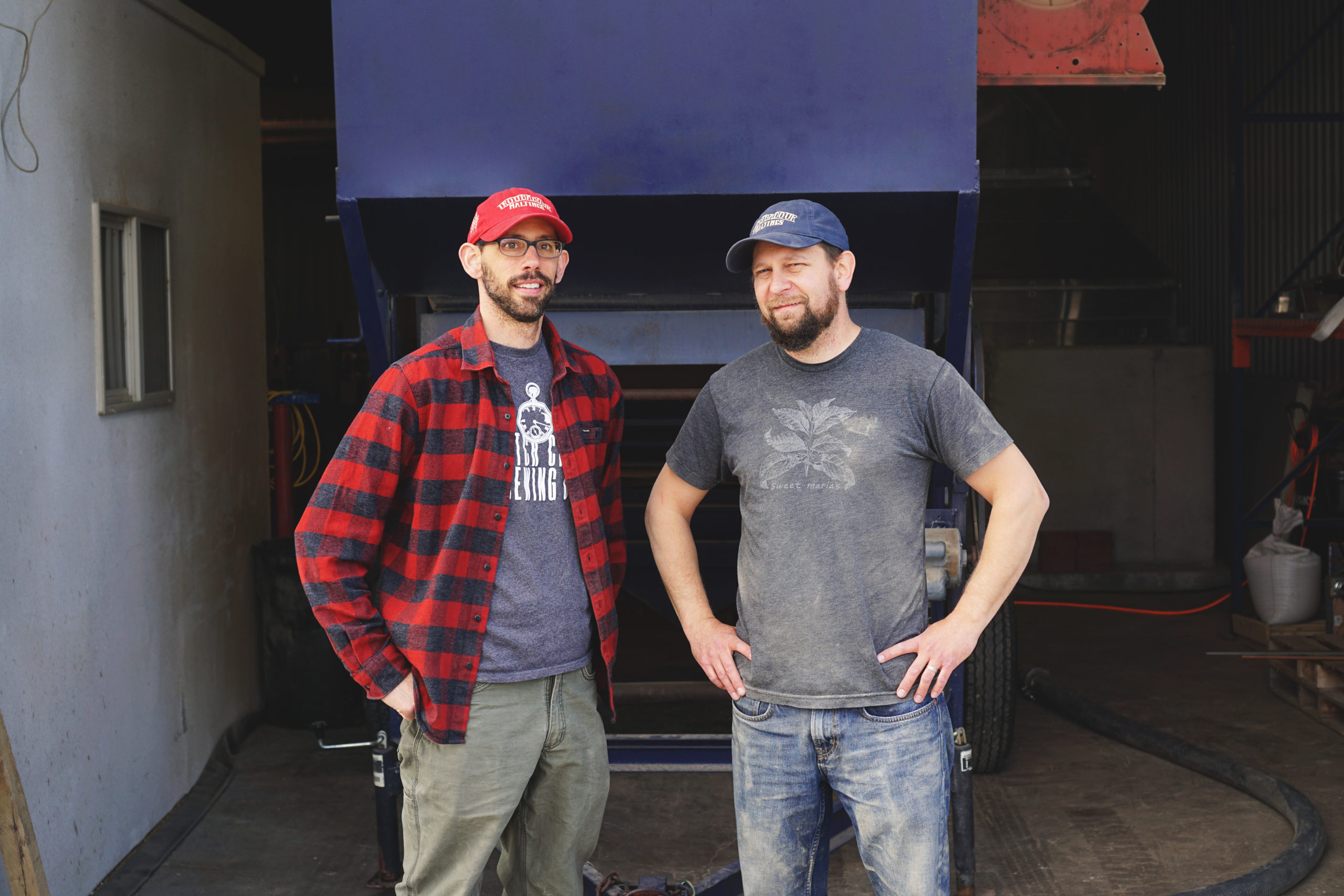
The Olander family has been farming on their property southeast of Loveland, Colorado since 1926; an operation that now spans five generations. The farm currently covers 2000 acres, with crops including wheat, rye, alfalfa, corn, and more recently, LCS Genie. The family has a long history of barley cultivation, having grown a Moravian two-row variety at the behest of brewing giant Coors for almost 30 years. However, the Olanders didn’t have a lot of success actually selling the variety back to Coors, often running into issues with quality and yield.
As a result, barley growing at Olander Farm ceased in 2010. Seemingly unphased by this, in 2013, Todd Olander, his dad Steve, and wife Emily had the beginnings of an idea to establish a malthouse of their own, one that would allow them to oversee the development of malt from the field onwards.
“We started investigating to see if craft brewers had actually thought about using craft malt,” Olander tells me, his research leading to the discovery of another operation, Troubadour, which was looking to set up something similar. It also led him to the door of LCS—itself only recently established in Fort Collins—as he looked at different barley varieties he could trial at the farm. By 2014, barley was back in the ground at Olander Farm.
Olander tells me how, initially, he tried a handful of different varieties from Canada, including Metcalfe and Meredith. He also tried some varieties from North Dakota, including a six-row called Lacey and a two-row known as Pinnacle. With LCS located right up the road, he also trialed both their LCS Genie and LCS Odyssey varieties. By 2016, the family had begun producing malt using a malthouse designed by German manufacturer Kaspar Schultz, and their malting business had a name: Root Shoot.
“We grew all those different varieties, and for some odd reason everyone was interested in the LCS Genie,” Olander says. “It was performing really well in the malthouse as well. I think it just comes back to flavor.”
Among the brewers interested in getting hold of Root Shoot’s Genie Pale malt was Wayne Waananen, head brewer at Station 26 Brewing in Denver. Waananen is an experienced brewer of some repute, having started out as a homebrewer in the 80s. Famously (or perhaps infamously depending on who you ask) in 1995, while working at the Sandlot Brewery inside the Coors Field baseball stadium, he brewed the first batch of what would become the incredibly popular international brand Blue Moon. Over the following years he worked at a string of breweries across the United States, including Miners Brewing Company in South Dakota and Wyoming’s Prairie Fire Brewing, before joining Station 26 in 2013.
Not long after the Olanders had established their malting business, Waananen approached Root Shoot looking for the perfect Pale malt to balance the sizable hop bill in Station 26’s flagship Juicy Banger IPA.
“We went back and forth with them trying to dial in the recipe in the malthouse,” Olander says. “It just happened to be this Genie Pale that Wayne was interested in.”
Olander tells me he’s been gradually weaning off other varieties so Root Shoot can concentrate on producing more LCS Genie. This is not only because of the great-tasting malt it produces, but because of how well it performs in the field. As a grower, Olander will reject any barley that doesn’t meet the high standards required for malting—something he admits was often the case with the Moravian two-row he used to cultivate—but a massive 75–80% of the LCS Genie grown by Root Shoot will make it to the malthouse.
“We get plump, uniform kernels, and it gives us dormancy, which is a really great thing for our region,” Olander says, “A lot of times we’ll get rain right at harvest, and that can be detrimental if you don’t have dormancy built into the grain. That’s helped us out with the quality of the grain, so we don’t have any pre-sprout damage.”
Like Troubadour, Root Shoot’s products have also picked up awards at the Craft Maltsters Guild’s annual Malt Cup, including a gold for its Genie Pale malt at the inaugural competition in 2019. Genie Pale has medaled every year since, netting bronzes in 2020, 2021 and 2022. LCS Genie-made malts from multiple maltsters have performed consistently well in the awards in its four years of existence.
Jesse Bussard, who’s been executive director at the Craft Maltsters Guild since December 2019, tells me “a lot of different things go into making really great malt.”
The Guild was formed in 2013 by a group of eight maltsters, and has since grown to represent the interests of more than 70 craft malting businesses in North America, plus a handful of members located in Europe and the United Kingdom. It defines a craft maltster as a business that produces less than 11,000 tons of malt per year, in which at least 50% of the grain used is harvested within 500 miles of the malthouse, and is no less than 76% independently owned. Since September 2019, breweries that purchase malt from its members have had access to a Craft Malt Certified seal, allowing them to inform customers that they’re supporting the craft malt supply chain.
The Malt Cup takes place at the Craft Malt Conference, held each year in February, giving maltsters small and large from around the globe the chance to network and dig in to some of the industry’s most pressing topics. One particularly interesting point is that the competition is not open to Guild members alone. It’s also open to what the Guild calls allied trade members, which includes some of the largest malt producers in the world, such as Briess and MaltEurop.
The primary aim of the Malt Cup is to uphold quality, and the judging process is stringent, beginning with malt quality testing at the lab level, before moving on to a round of sensory judging. The Best in Show—as Bussard describes them—then undergo a further round of lab analysis and sensory evaluation, looking at everything from protein levels to color and flavor, before the winners are chosen.
That the likes of Troubadour and Root Shoot have succeeded against competition that has both more experience and vastly greater resources is surely testament to the high quality of product these smaller maltsters are producing—and that modern varieties like LCS Genie are enabling. Although the Craft Maltsters Guild’s chief executive is modest when asked if the barley variety itself is the major contributing factor in the awards’ outcomes so far.
“It’s not just the variety. It’s the process the maltster has put together; the way they operate and have refined their malting process helps, too,” Bussard says. “I think [the awards] show that LCS Genie is a great variety to make malt, but also part of it is a skill level of the maltsters themselves that really contributes to the quality of the malt.”
The evidence suggests, however, that not only does LCS Genie perform well in the field, in the lab, and in the malthouse, but its efficiency in the brewery and the appeal and quality of its flavor means that more brewers like Zach Coleman at TRVE and Wayne Waananen at Station 26 are asking for it. And if brewers are asking for it, that ultimately means consumers are asking for it, because no one is more demanding than the person who spends their hard-earned money on your beer.
How then, does a product like LCS Genie transition from a niche occupied by smaller maltsters and brewers to something with national appeal? Or, put another way: How does LCS Genie define U.S. malting barley in the way that Citra and Cascade have both done for North American hops?
The answer is it looks like this is already beginning to happen…
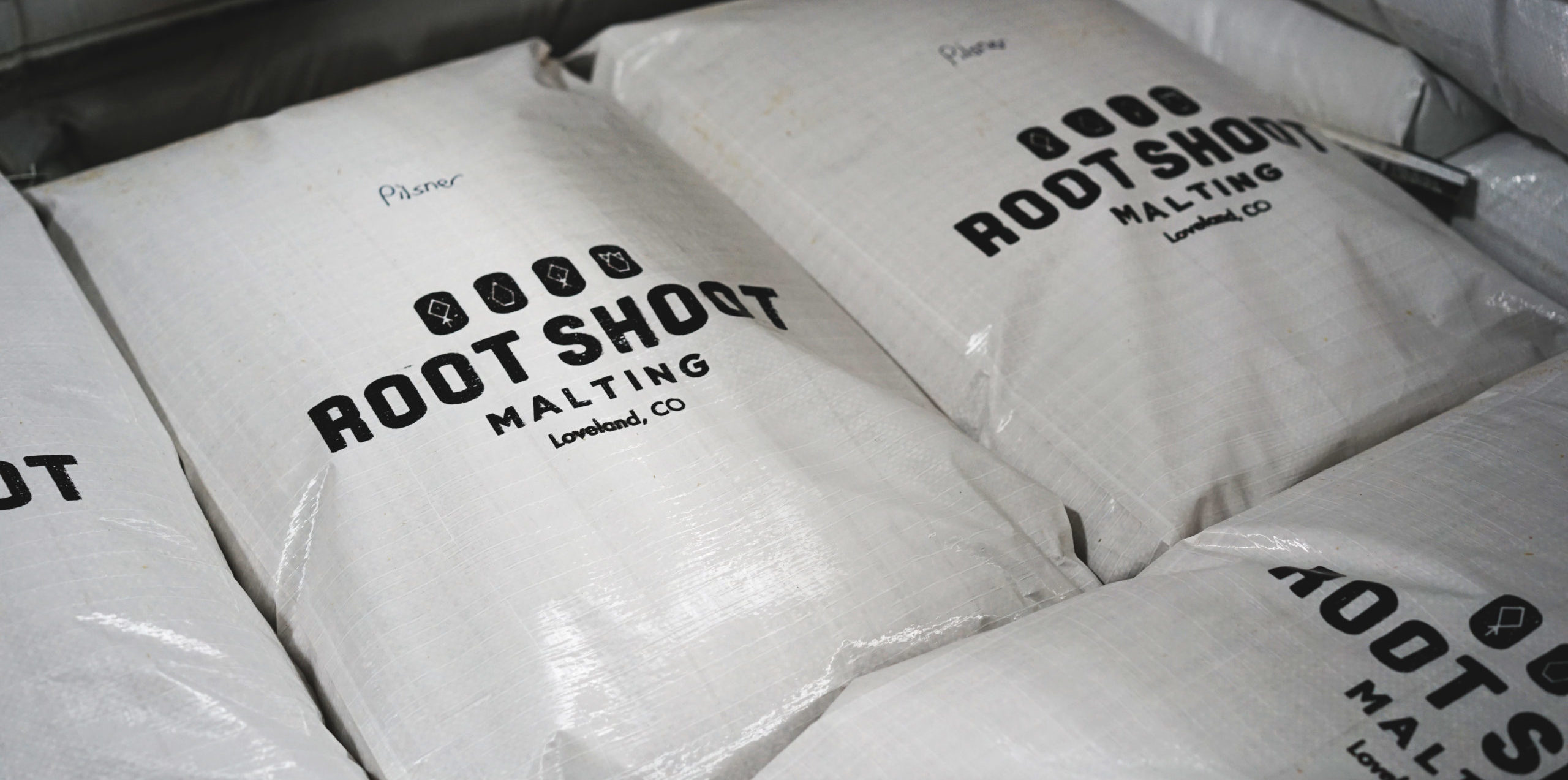
One final issue that warrants examination is the future of U.S. barley cultivation in the face of global climate change, and what this means for brewers and varieties such as LCS Genie.
A September 2021 report published by the U.S. Department for Agriculture stated that barley yields in 2021 were at 44.3 bushels per acre, down 5.4 bushels from the previous year. The total harvested area was also down 36%, at a total of 650,000 acres, while total production was 118 million bushels, down 31% from the revised 2020 total of 171 million bushels.
Figures like this should send a warning to those involved at any stage of the beer supply chain, and represent the potential for considerable challenges within the brewing sector over the years to come.
However, when taking a closer look at the figures for LCS Genie, there’s some encouraging data. In Montana, the second-highest state for U.S. barley production with approximately 700,000 tons of barley for malting annually (33.5% of the national total), LCS Genie has excelled. LCS Genie was the highest yielding commercial variety in 2020 Montana trials, at 3.48 tons (145 bushels) per acre, and came in at more than three times the national average the following year.
When you also consider this against the figure given earlier by Todd Olander of Root Shoot Malting—75–80% of his LCS Genie harvest is viable for malting—the agronomic potential of LCS Genie is drawn sharply into focus.
But LCS Genie is more than just a strong-yielding, high-quality barley designed for malt production. As we’ve learned, it also performs incredibly well in the brewhouse, its low beta-glucan content allowing for efficiency within time-sensitive brewing schedules while also delivering high and consistent levels of extract.
Perhaps most crucially of all, because this is beer we’re talking about after all, it tastes fantastic. LCS Genie’s incredible versatility allows it to be adapted into a vast range of both base and specialty malts, suitable for Pilsners, Pale Ales, Saisons, Stouts, or whatever the brewer using it can dream up. Dare I say it, LCS Genie has the potential to become an industry staple just as British varieties like Maris Otter and Golden Promise have over the past 50 years. The crucial difference here being that LCS Genie doesn’t just perform for brewers, but benefits the supply chain from end to end. Or, perhaps from grain to glass is the better way to put it.
“I think the number of maltsters who’ve played with LCS Genie and the number of brewers or maltsters who have played with that have realized: ‘Here’s all this potential for character that we didn’t have before.’ LCS Genie has been the conduit, the catalyst for unlocking that door,” Troubadour Maltings Chris Schooley tells me.
“This is an ingredient we can’t ignore anymore.”
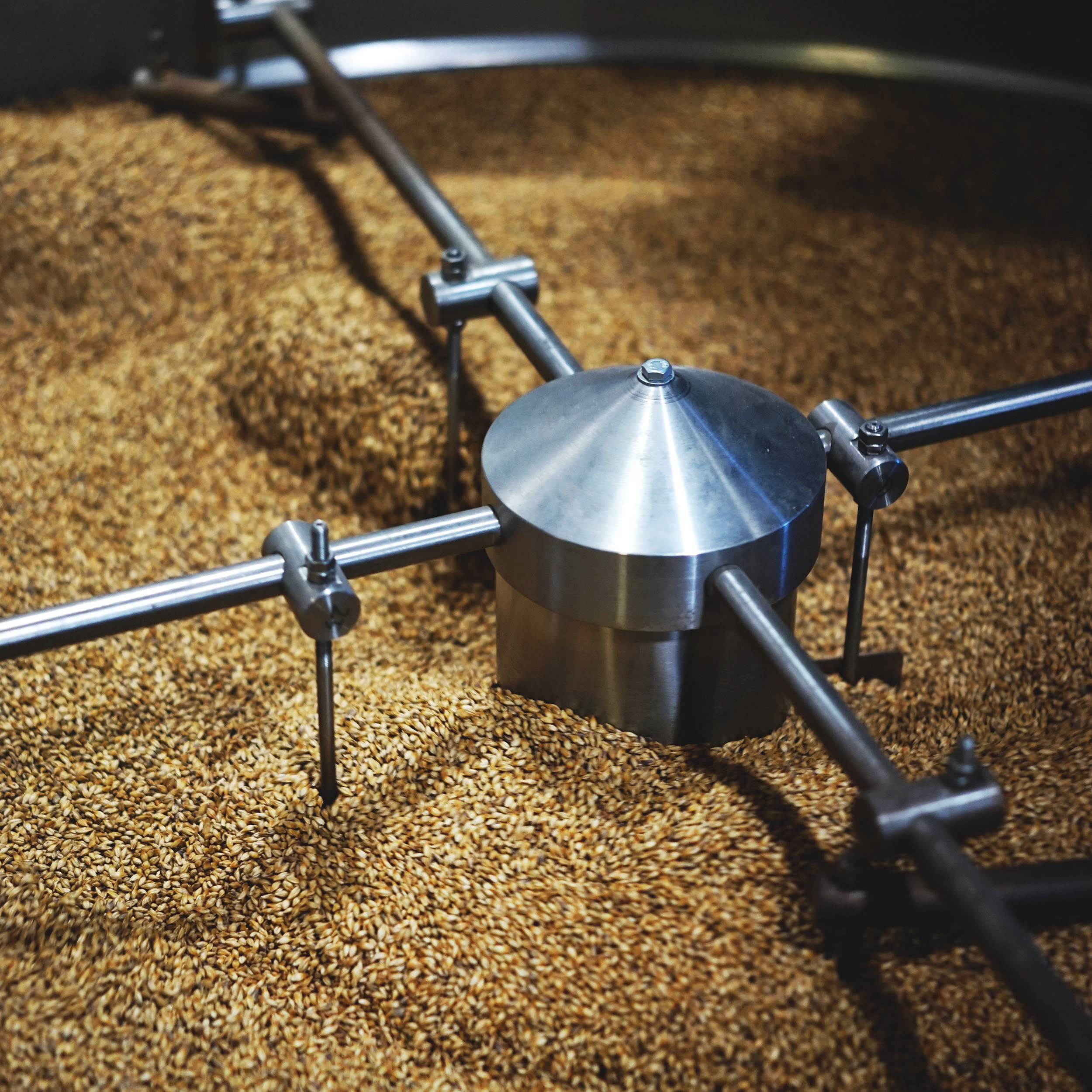
About the author: Matthew Curtis is an award-winning writer based in Manchester, England. He is the author of Modern British Beer and An Opinionated Guide to London Pubs, has written for numerous industry publications, including Good Beer Hunting, Ferment, and BEER, and is the co-founder of Pellicle magazine and podcast.

